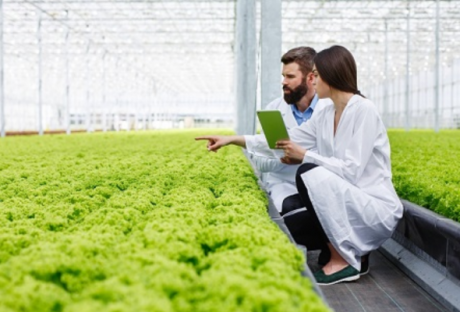The term menopause has been widely used to describe an older woman’s experience. But that’s hardly right. The onset of premenopause starts as early as a woman enters her late thirties.
It causes changes in the mood and menstruation cycle.
Yes, it’s true that menopause is a natural biological cycle and a sign of a woman’s aging; it’s been wrapped around stigma for a long.
Many women often don’t understand how to understand the symptoms and the process of treatment for menopause.
However, it’s not difficult to understand the symptoms of menopause and the treatment options available for easing discomfort. It’s a decade long journey but with the right resources and knowledge, you can embrace comfort. Read this article as we explore the several signs of menopause. We have also provided some tips at the end.
1. Vaginal Dryness

Most women don’t expect to have the same level of moisture they had in their 20s in their vaginas as they hit their late thirties. But the early onsets make you feel quite uncomfortable. When women exit their typical childbearing years, they experience a decrease in vaginal moisture as estrogen level starts to go down. It causes less moisture retention.
Less moisture in the vagina can cause differnet issues like discomfort during intimacy and pain. Women whose anatomy has more external pelvic tissue can find walking uncomfortable, the friction exacerbating discomfort.
Increased dryness can even make urinary tract infections or UTIs more prevalent. A UTI supplement can help combat future infections. A vaginal moisturizer can help restore hydration to the pelvic region, increasing comfort and restoring balance.
2. Sleep Issues
Sleep issues are another problem women deal with during this phase. When the sleep cycle is off, everything around starts to feel uncomfortable and seem a little bit more extreme. When your hormones start to fluctuate with age, sleep disruption often becomes the reason. Many women face difficult falling asleep. They tend to wake up frequently earlier than usual.
These areas some common disruptions during menopause leading to daytime fatigue. The problem carries over as it keeps disrupting personal life, family activities, etc.
In early perimenopause, nighttime hot flashes can spark sleep challenges without you realizing it. Additionally, nighttime urges to urinate can cause new disruptions. This can be due to changes in vaginal tissue or hot flash-induced disruptions. Do what you can to cultivate a healthy sleep environment that blocks out blue light and disruptions. Maintain the same sleep and wake time every night and practice good sleep hygiene by avoiding technology before bed.
3. Irregular Periods
Typically, irregular periods during perimenopause involve cycles that become shorter, longer, heavier, or lighter before stopping completely. If your cycle changes in an unpredictable way without a clear pattern, menopause may be the cause.
Tracking your cycle in a planner or a period-tracking app can help you monitor changes in flow, duration, and texture. Longer, lighter periods may feel disruptive, but there are options to help manage them. Consider menstrual cups or period underwear to make these transitions more comfortable and convenient.
4. New or Worsening Mental Health Concerns

With menopause, major things change in a woman’s life. It’s a big change affecting different parts of their life, leading to hormonal imbalance and often constant mood swings. When things go out of control, they become difficult to cope with. That’s why it’s important to keep track of your mental health when hitting menopause.
Oftentimes, it’s difficult to differentiate between typical challenges and new ones, as this phase of life is so demanding. However, if you notice a higher level of irritability, especially at times you wouldn’t expect, pay attention.
Look for worsening signs of anxiety, depression, and mood swings, observing when and where they occur. Many women in menopause also report feelings of brain fog, where concentration is difficult.
5. Changes in the Digestive System
So much of the body and its functionality is dependent on hormone levels. In menopause, hormone shifts can lead to gastric changes that can be visible or sometimes very subtle, like a new digestive allergy. Some women experience increased water retention and bloating, which can be uncomfortable and disruptive. Additionally, a woman’s typical digestive habits can change, leading to constipation or food sensitivities. Review your typical diet habits and assess if you need to make minor or more substantial changes.
Most people don’t hydrate enough, which can cause anyone to become chronically constipated. Look into fiber supplements if eating the recommended amount of daily fiber is unsustainable. If you do take fiber supplements, follow the recommended dosages and instructions. Ingesting too much additional fiber and not enough hydration can worsen constipation and discomfort. Focus on a balanced diet of whole foods, protein, and collagen to support digestion and skin and bone health.
Lifestyle Changes to Get Through this Phase
It’s not easy to go through this phase, and women would need medical options as well as a strong focus on a well-maintained lifestyle. Here are some changes you must make in your lifestyle to ease the symptoms during this phase
Healthy Diet
A healthy diet is the first priority to keep yourself strong and sensitive to symptoms. It’s best to limit foods that contain saturated fat, oils, and sugars and have high caffeine content or alcohol. The best foods you can eat are vegetables, fruits of different types, and whole-grain food. It’s also best to consider foods that are phytoestrogen-rich. You can try things like lentils, chickpeas, and so on. Keep yourself hydrated and drink plenty of water.
Regular Exercise
Yes, exercising must also be part of your lifestyle when you hit the menopause phase. It has several benefits including helping with hot flashes, improving bone health and improving sleep quality. You can include weight-bearing activities such as walking, dancing, adn running. Keep moderate-intensity walking for 30 minutes in your daily routine.
Stress Management
Stress management techniques can also help during the menopause phase. You can practice tai chi, yoga, meditation, and breathing exercises to keep yourself calm. You must also work on your social connections with your colleagues and friends and talk to them about your experiences.
Sleep Hygiene
Maintaining a good sleep cycle and healthy sleep hygienes is also part of your wellness planning for each time of the day. Start by keeping all your tech devices away when you go to bed. Create a sleep schedule and go to bed at exact same time of the night and wake up at a specific time in the morning everyday. Spend some time on the bed before falling asleep.






















